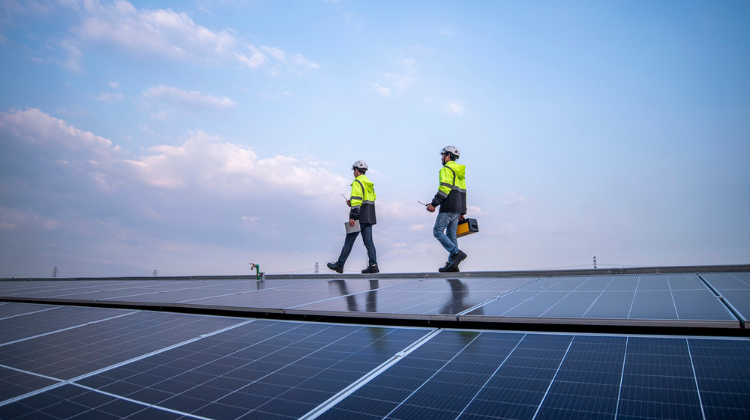The Council of Ministers, at the request of the Ministry for Ecological Transition and the Demographic Challenge (MITECO), today approved a Royal Decree-Law to strengthen the oversight and resilience of the electricity sector.
This includes measures to monitor compliance with the obligations of various stakeholders, the inclusion of new tools to strengthen the system, and measures to promote electrification, storage, and flexibility. All of these issues are the result of the Committee’s work analyzing the circumstances surrounding the electricity crisis of April 28.
“The Spanish electricity system had everything it needed to function properly on April 28. But we have conducted an analysis that allows us to move forward with measures that will better protect us, proactive measures,” Vice President Aagesen emphasized.
STRENGTHENING SUPERVISION AND CONTROL
To strengthen the technical management of the electricity system, the regulation approved today strengthens the supervisory functions of the National Commission on Markets and Competition (CNMC). The CNMC will have six months to evaluate the voltage control obligations of the electricity system agents required to provide the service and prepare the corresponding report, which it will update every three months. The independent regulator will also complete an extraordinary inspection plan for replacement capacities, with greater attention to autonomous start-up facilities and distribution networks, which will be repeated every three years.
The System Operator (Red Eléctrica) is also tasked with preparing proposals for regulatory changes regarding responses to power fluctuations, the rate of voltage variation, the scheduling of technical restrictions, and other technical elements that contribute to strengthening system security. It is also responsible for developing a new operating procedure to coordinate the development plans for the transmission and distribution networks, as well as a proposal for minimum monitoring requirements for incident analysis. These technical proposals must be completed within three to 15 months. Subsequent regulatory reforms must be approved within six months.
Red Eléctrica will also incorporate into its functions the ability to serve as a single point of access to end-customer data—always respecting the confidentiality of personal information—to improve the functioning of the electricity markets. To date, this information, sourced from 30 million smart meters, is distributed across more than 300 distribution companies.
PROMOTION OF ELECTRIFICATION
To further the process of electrifying the economy and streamline the adaptation of the electrical infrastructure to the needs of the productive sector, the current transportation network planning will be reviewed every three years, initiating a new six-year planning cycle. Modifications to specific aspects will be approved every two years.
Exceptionally, to anticipate future voltage regulation and oscillation damping needs, among other electrical variables, the current Planning Plan for 2026 will be modified with accelerated processing to include synchronous compensators, reactances, and other elements that provide additional services, which, in turn, will reduce the cost of technical restrictions.
To facilitate the connection of new economic activities, primarily industrial, to the electricity grid, the regulations governing access and connection to demand are being revised, setting the expiration date for access rights at five years. This will allow for greater utilization of existing, currently unused, networks. Likewise, the deadlines for electricity companies to supply new supplies are being shortened, and provisions are being adopted to expedite the connection of new access points for demand, primarily industrial.
Connection facilities also extend to connections to charging points for electric vehicles, which are exempt from authorization, provided that an environmental impact assessment or declaration of public utility is not required.
In line with electrification measures, to promote self-consumption, the maximum distance between generation and consumption has been increased to 5 km for facilities under 5 MW, the typologies have been made more flexible, and the role of a self-consumption manager has been introduced, who may act as a representative of the participants, facilitating the necessary procedures for its proper functioning.
The electrification of air conditioning in residential communities is encouraged, and city councils are authorized to apply deductions of 50% on the Property Tax and 95% on the Tax on Construction, Installations, and Works (ICIO), as is already the case for self-consumption.
To further boost demand and industrial electrification, the decree incorporates an 80% exemption from electricity tolls for the electro-intensive industry, retroactive to January 23rd, given the effectiveness it has demonstrated since its establishment two and a half years ago during the war in Ukraine.
The processing of renewable energy projects is also being modified to facilitate their execution, avoid costs arising from strong international competition, and optimize the quality of the facilities. The renovation of generating facilities—their repowering—is also being encouraged, reducing administrative deadlines by half, provided the resulting capacity is less than 125% of the original.
BOOST STORAGE AND FLEXIBILITY
As an additional measure to strengthen the system’s resilience, the decree provides a significant boost to storage, both through hybridization at generating facilities and through its incorporation into the electricity system as a whole. The administrative processing of applications is streamlined, especially for projects under the jurisdiction of the General State Administration, with a reduction in processing times by half.
Finally, Law 24/2013 on the electricity sector is amended to incorporate new flexibility tools, including the independent aggregator, which will combine multiple consumption sources and the electricity generated by consumers, producers, or storage facilities for sale or purchase in electricity markets and the provision of services to the system. With the implementation of these provisions, consumers will be able to contract the services of an aggregator to manage their demand and obtain savings on their bills or some other form of compensation.































